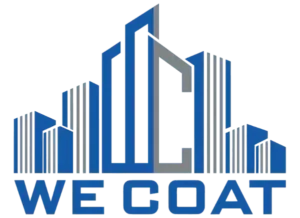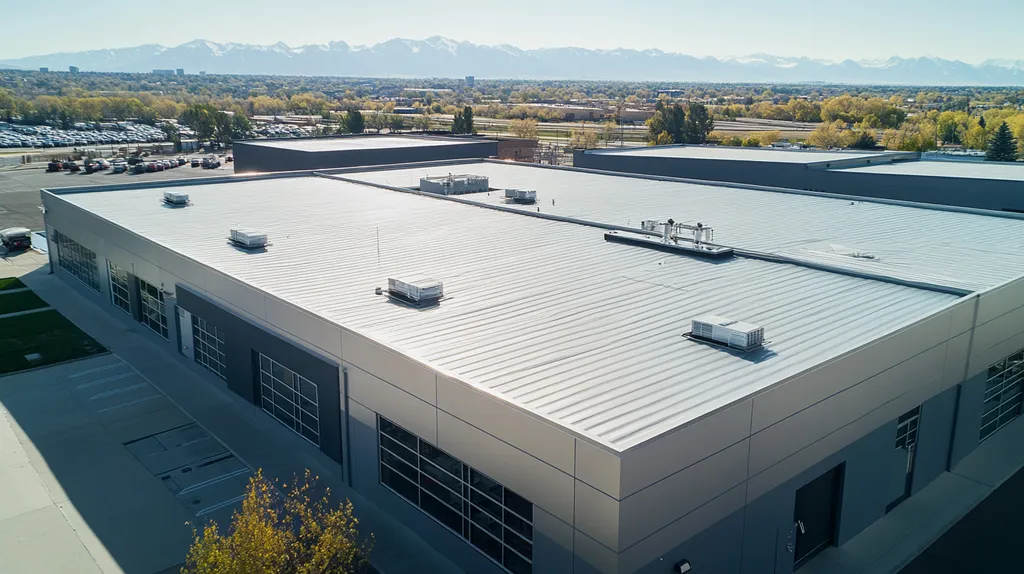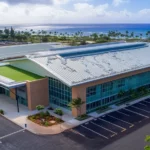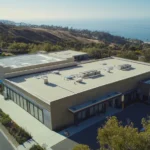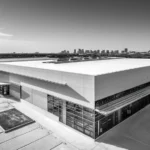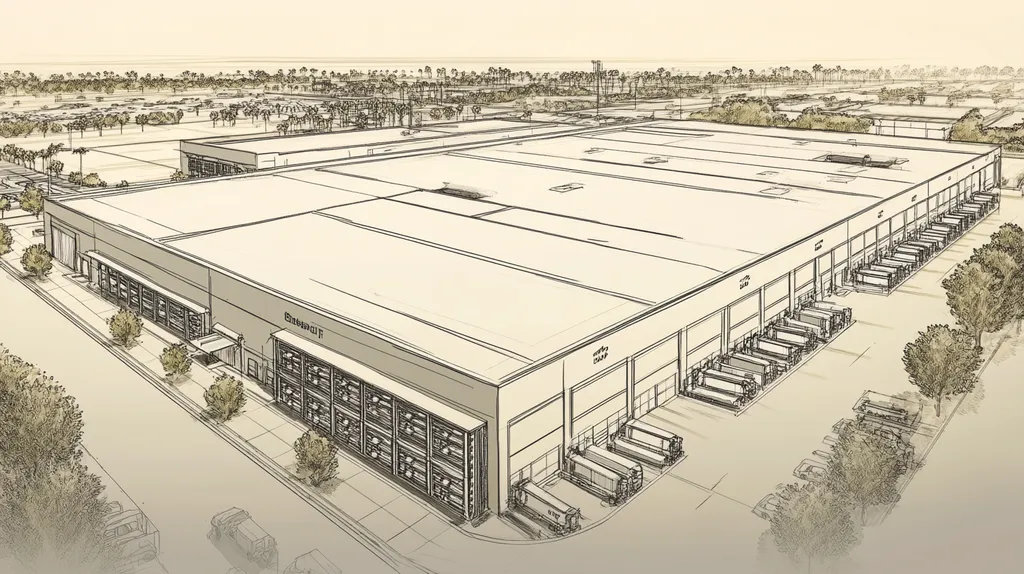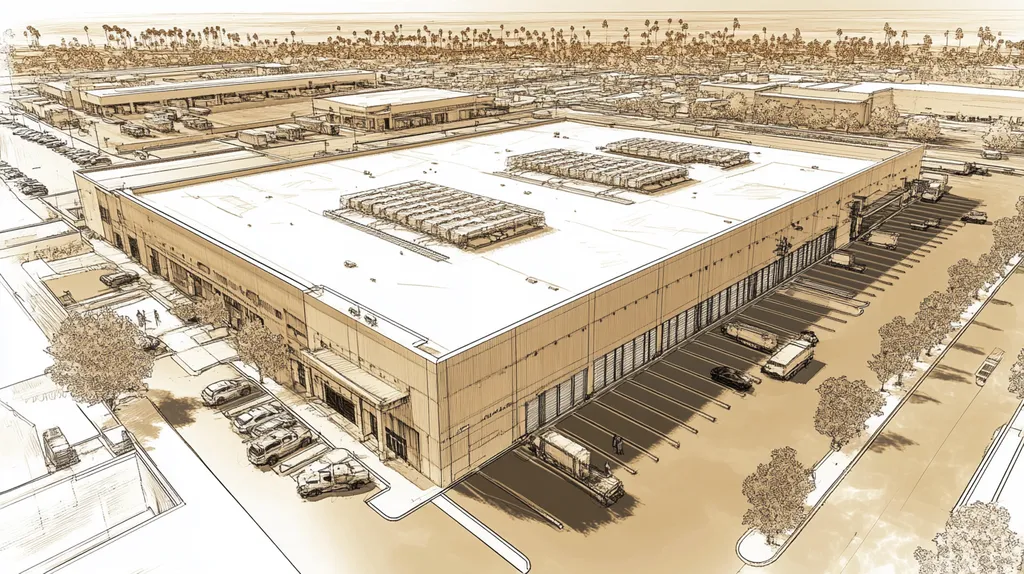As energy costs continue to surge, commercial building owners face mounting pressure to improve roof efficiency. With traditional roofing systems contributing up to 30% of a building’s cooling load, facility managers must act decisively to control expenses.
Modern roof coatings present a powerful solution, capable of reducing energy consumption by 15-25% when properly implemented. The Department of Energy reports that energy-efficient roofing can decrease peak cooling demand by up to 15%, translating to substantial operational savings.
This guide examines critical factors in coating selection, financial considerations, compliance requirements, and implementation strategies to help facility managers optimize their roofing systems for maximum energy efficiency.
SECTION 1: PERFORMANCE FACTORS
In an era where energy costs are continually rising, facility managers confront the crucial task of maintaining efficient roofs. A subpar roof can substantially inflate energy usage, thereby straining budgets and affecting bottom lines. Notably, commercial buildings represent 20% of the nation’s total energy consumption, a statistic provided by the U.S. Department of Energy. Grasping the fundamental performance factors is essential for enhancing energy efficiency, ensuring durability, and driving down long-term expenses while supporting environmental sustainability.
Roof Material Energy Efficiency
The choice of roofing material plays a significant role in energy efficiency. Traditional asphalt roofs, for example, often absorb heat, which can lead to higher cooling costs. Conversely, materials specifically engineered for energy efficiency, such as TPO and PVC, provide superior insulation, reflecting more heat and resulting in lower energy consumption.
Opting for energy-efficient roofing materials can also pave the way for LEED certification, enhancing a property’s appeal in the market. Cost-effective alternatives like cool roofing options help combat urban heat islands while simultaneously reducing indoor temperatures. This thoughtful investment improves comfort levels and can lead to notable savings on HVAC operating costs.
Facility managers are advised to assess the long-term performance of each roofing material, taking lifecycle costs into account. Studies suggest that while the initial investment in efficient materials may be higher, the savings on energy bills and maintenance costs often recoup that investment within a few years. Commitment to energy-efficient materials translates into considerable operational advantages.
Key Action Items
Weather Resistance and Durability
The durability and weather resistance of a roof are paramount for sustaining energy efficiency. Roofs failing to endure harsh weather can lead to leaks, escalating heat loss and repair expenses. For instance, roofs exposed to extreme temperature fluctuations often necessitate more energy to maintain comfortable indoor conditions.
Modern roofing technologies utilize materials designed to withstand environmental challenges, thus ensuring long-lasting performance. For instance, silicone coatings offer robust protection against UV damage and moisture, effectively contributing to energy savings.
It is critical for facility managers to regularly monitor roof conditions and implement preventive measures against deterioration. Conducting routine inspections and maintenance can markedly extend a roof’s lifespan, ensuring ongoing energy efficiency. A well-maintained roof stands resilient against environmental stressors, resulting in optimal performance.
Key Action Items
Reflectivity and Heat Reduction
Reflective roofing surfaces are essential for maximizing energy efficiency by minimizing heat absorption. High reflectivity can substantially decrease building temperatures, thus reducing the dependence on air conditioning during warmer months. Reflective coatings and cool roof technologies are becoming increasingly favored in commercial properties.
Research indicates that a well-treated, reflective roof can lower energy costs by 10-30% annually. Facilities using these coatings not only enjoy reduced energy expenses but also benefit from extended roof lifespans by mitigating thermal expansion and contraction.
When selecting coatings, facility managers must consider their specific climates. Reflective surfaces are especially beneficial in hotter regions, while coatings that improve reflectivity and UV resistance promote superior energy performance across diverse environments.
Key Action Items
SECTION 2: FINANCIAL CONSIDERATIONS
As energy costs continue to rise, facility managers face the urgent challenge of maximizing their budgets through energy efficiency. Investing in roof coatings is not just a protective measure; it’s a financially savvy strategy that can lead to significant cost savings and an extended lifespan for roofing systems. This section explores how roof coatings can directly lower energy expenses, decrease maintenance requirements, and serve as a budget-friendly alternative to complete roof replacement.
Cost Savings through Energy Efficiency
Facility managers can achieve substantial savings by enhancing roof energy efficiency with coatings. Reflective coatings can dramatically reduce heat absorption, lowering air conditioning expenses during summer months. The U.S. Department of Energy estimates that energy-efficient roofs can decrease cooling costs by 10-30%.
These coatings not only benefit individual facilities but also help reduce the broader heat island effect, which is becoming an increasing concern in urban areas. By implementing energy-efficient roofs, facilities contribute to a sustainable approach that alleviates overall energy demand.
Additionally, financing options such as energy efficiency incentives and tax credits can help cover initial coating installation costs. By leveraging these financial resources, facility managers can enhance their roofs without straining budgets.
Key Action Items
Reduced Maintenance and Repair Costs
In addition to energy benefits, roof coatings can significantly lower maintenance and repair costs. A properly applied coating enhances waterproofing, reducing the likelihood of leaks and associated repair issues. This proactive measure helps facility managers avoid costly emergency repairs and extends the intervals between maintenance checks.
For example, a commercial property with a well-coated roof can expect longer maintenance cycles. This efficiency translates into better budgeting for maintenance expenses over time, allowing for a more strategic allocation of resources.
Moreover, coatings provide a barrier against UV damage and environmental wear, further extending the lifespan of the underlying roofing system. By mitigating repair risks, facility managers can maintain financial stability and reduce unexpected expenses.
Key Action Items
Comparative Analysis: Coatings vs. Replacement
When evaluating roofing options, coatings emerge as a budget-friendly alternative to complete roof replacement. Full replacements can be dauntingly expensive, often ranging from tens to millions of dollars depending on building size and material. In contrast, roof coatings generally incur only a fraction of those costs, making them a more practical option.
Coatings can prolong the life of existing roofing systems by up to 15 years, making them not just viable but sustainable. The return on investment (ROI) from coatings frequently surpasses that of new roof installations, primarily due to savings in energy and reduced maintenance.
While facility owners might initially hesitate to consider coatings, a thorough lifecycle cost analysis often reveals their economic advantages. Understanding these benefits can guide decision-makers to invest wisely in roof coatings instead of opting for costly replacements.
Key Action Items
SECTION 3: COMPLIANCE REQUIREMENTS
Facility managers must prioritize compliance with roofing regulations to enhance energy efficiency while avoiding penalties. Non-compliance can lead to steep fines and harm a company’s reputation. As energy efficiency grows in importance, it’s essential for property owners to understand relevant regulations. This section explores critical compliance areas, focusing on regulatory standards, environmental impacts, and local building codes.
Regulatory Standards for Roofing Materials
Regulatory standards define the materials permitted in commercial roofing systems. These regulations typically cover fire resistance, durability, and energy efficiency performance. The Cool Roof Rating Council (CRRC) offers guidelines on reflective roofing materials that effectively reduce energy consumption by minimizing heat absorption.
Facility managers need to ensure that roofs comply with both federal and state requirements. This often involves providing documentation to demonstrate that the specified roofing materials meet these standards. Non-adherence can result in penalties and rising operational costs.
Additionally, regulations may vary by region, making it vital for managers to review local requirements before making roofing decisions. Choosing compliant materials not only meets legal obligations but also promotes sustainability and cost savings.
Key Action Items
Environmental Compliance and Sustainability
The growing focus on sustainability has led to stricter regulations surrounding commercial roofing materials. Many areas now require the use of eco-friendly products that adhere to sustainability guidelines, including low-VOC (volatile organic compounds) coatings to improve indoor air quality.
Roofing systems that meet Solar Reflective Index (SRI) standards are increasingly recommended. These coatings help reduce the urban heat island effect, contributing to local energy conservation goals. Failing to meet these regulations can jeopardize financial incentives and incur penalties.
To boost environmental compliance, property owners should stay informed about local sustainability initiatives. Participating in such programs not only facilitates compliance but may also provide tax incentives and energy rebates.
Key Action Items
Building Codes and Local Ordinances
Local building codes establish essential safety standards for construction, including roofing systems. Facility managers must navigate these codes to ensure that roofing projects are compliant from the outset. Non-compliance can lead to costly retrofits, delays, and safety risks.
Many local ordinances also emphasize energy efficiency, mandating energy audits and specific roofing upgrades that align with broader energy-saving objectives. Misunderstanding these requirements can significantly impact a facility’s operational efficiency and budget.
Engaging with local building departments early in the planning process is crucial for clarity on compliance requirements. Staying informed about updates to building codes is vital for maintaining compliance and optimizing energy savings.
Key Action Items
SECTION 4: RISK MANAGEMENT
Effective risk management is critical for ensuring the longevity and energy efficiency of commercial roofs. With the increase in extreme weather events, property owners face significant challenges in protecting their roofs. Research indicates that 60% of commercial roofs sustain serious damage from weather-related issues. This section focuses on recognizing roofing hazards, strategies for reducing weather-related risks, and methods to alleviate structural vulnerabilities.
Identifying Potential Roofing Hazards
The first step in robust risk management is identifying potential roofing hazards. Facility managers should thoroughly inspect roofs for signs of wear, including cracking, blistering, or pooling water, all of which threaten the roof’s integrity and energy efficiency.
Beyond visual inspections, employing thermal imaging technology can identify hidden problems, such as insufficient insulation. Addressing these issues early can save time and expenses before they escalate.
Establishing a regular maintenance schedule helps detect potential hazards from the outset, protecting energy efficiency and overall building performance. Engaging experienced roofing professionals during inspections can provide valuable insights into risks, leading to well-informed decisions.
Key Action Items
Mitigating Weather-Related Damage Risks
Mitigating risks from weather-related damage is essential for maintaining optimal roof performance. Severe weather, such as heavy rain and strong winds, can cause leaks and structural failures. Implementing roof coatings can enhance waterproofing and defend against harmful UV exposure.
Creating a strategic plan for weather events is vital. Effective water drainage systems, such as well-placed drains, can reduce water pooling, subsequently lowering the risk of leaks and energy inefficiencies.
Additionally, preemptive inspections before changing seasons can reveal vulnerabilities to storms. Strengthening roofs against high winds is another important approach. Keeping updated with local weather forecasts helps facility managers prepare their properties effectively, protecting both the roof and the building’s energy efficiency.
Key Action Items
Strategies for Minimizing Structural Risks
Minimizing structural risks is crucial for maintaining long-term energy efficiency. One effective method is ensuring that roofing materials are installed correctly; poor installation can lead to premature failures and increased repair needs.
Utilizing materials with high wind resistance and impact ratings can add an extra layer of protection. For instance, reinforced roofing membranes greatly enhance durability under physical stress.
Open communication with roofing contractors is essential to ensure that installations meet current industry standards. Continuous education about new roofing technologies and regulations will provide facility managers the knowledge to make informed investments, ensuring both the roof’s integrity and energy efficiency remain intact.
Key Action Items
SECTION 5: OPERATIONAL PROCEDURES
In the quest for greater energy efficiency in commercial roofs, properly applying coatings emerges as a critical strategy. When executed effectively, these coatings can cut energy consumption by 20% or more, translating into substantial savings each year. This section outlines the operational procedures essential for preparing, installing, and maintaining roof coatings to maximize energy efficiency and ensure durability.
Pre-Coating Preparation and Inspection
Thorough preparation is crucial before applying any roof coating. Start with a comprehensive inspection of the roof system to identify damage, leaks, or structural weaknesses. Cleaning the surface to eliminate dirt, algae, and contaminants is essential for ensuring proper adhesion.
Evaluate the condition of the substrate and assess existing coatings for compatibility with the new product. Any necessary repairs must be completed prior to coating to provide a solid foundation for the new application.
Choose an optimal time for application, ideally during mild temperatures and low humidity, as these factors directly influence the curing process. Documenting the roof’s condition before application establishes a baseline for future maintenance and performance assessments.
Key Action Items
Application and Installation Best Practices
Adhering to manufacturer guidelines during application is essential for achieving optimal performance. Utilize appropriate tools such as rollers, brushes, or sprayers to ensure uniform coverage. Each application method has specific best practices that should be followed to maximize effectiveness.
Ensure the coating is applied in multiple thin layers rather than one thick layer, as this promotes better adhesion and durability. Allow each layer adequate curing time before applying the next to enhance overall effectiveness.
Pay close attention to details during application to avoid imperfections like pooling water or trapped air bubbles, as these can lead to premature coating failure. Train staff on safety protocols and the proper techniques for using the coatings to avoid potential risks and ensure regulatory compliance.
Key Action Items
Post-Coating Maintenance and Monitoring
After applying the coating, ongoing maintenance is vital to preserve its performance and extend its lifespan. Schedule routine inspections every six months to promptly identify and remedy any issues that arise.
Regularly cleaning the roof surface is essential to prevent debris accumulation, which can diminish the coating’s reflective properties and, in turn, energy savings. Monitoring temperature variations on the roof provides valuable insights into the coating’s effectiveness and indicates the need for future maintenance.
Lastly, documenting maintenance activities will help assess the coating’s performance over time. Facility managers should adjust their maintenance strategies based on these evaluations to maximize the energy efficiency benefits of the roof coating.
Key Action Items
SECTION 5: OPERATIONAL PROCEDURES
As energy costs rise and environmental concerns mount, enhancing roof energy efficiency with coatings has become crucial for commercial facilities. A well-executed coating application can reduce energy consumption by 20% or more, leading to significant annual savings. This section outlines essential operational procedures for preparing, installing, and maintaining roof coatings to ensure maximum energy efficiency and longevity.
Pre-Coating Preparation and Inspection
Before applying any roof coating, thorough preparation is vital. A detailed inspection of the existing roof system should identify areas of damage, leaks, or structural weaknesses. Facility managers should also clean the surface to remove dirt, algae, and contaminants that could impair adhesion.
In addition to cleaning, assessing the substrate’s condition is crucial. Existing coatings should be evaluated for compatibility with the new material. Any required repairs must be completed prior to coating application to ensure a strong, reliable foundation.
Selecting optimal weather conditions is also essential, as coating application should ideally occur in mild temperatures and low humidity. These factors significantly affect the curing process and the coating’s performance.
Finally, documenting the roof’s condition before coating is essential. This creates a baseline for future maintenance and helps assess the coating’s performance over time.
Key Action Items
Application and Installation Best Practices
Applying the coating must adhere to manufacturer guidelines for optimal performance. Using the right tools—such as rollers, brushes, or sprayers—greatly influences application quality. Each method comes with specific best practices that should be followed to ensure uniform coverage.
Layer thickness is another critical factor. Applying multiple thin layers instead of one thick layer generally results in better adhesion and durability. Each layer must be allowed to cure fully before applying the next to enhance the coating’s overall effectiveness.
Attention to detail during application is vital. Avoiding pooling water or trapping air bubbles under the coating is essential, as these imperfections can lead to premature coating failure.
Finally, adequate training on safety protocols and application procedures is crucial for workers. This training helps mitigate risks during application and ensures compliance with regulations.
Key Action Items
Post-Coating Maintenance and Monitoring
Once the coating is applied, ongoing maintenance is essential for preserving its performance and extending its lifespan. Routine inspections should be conducted every six months to identify and address any issues promptly.
Regular cleaning of the roof surface is crucial to prevent the accumulation of debris, which can hinder the coating’s reflective properties. Without effective maintenance, dirt buildup can significantly reduce energy savings.
Monitoring temperature variations on the roof can also provide valuable insights into the coating’s performance. Temperature data helps determine if further inspections or maintenance are necessary.
Finally, logging maintenance activities will aid in assessing the coating’s effectiveness over time. Facility managers should proactively adjust their strategies based on these evaluations to maximize energy efficiency.
Key Action Items
Looking Ahead
With energy costs projected to rise 15-25% over the next decade, facility managers must act decisively on roofing efficiency improvements. Studies show that properly implemented roof coatings can reduce cooling costs by up to 30% while extending roof life by 10-15 years.
The data clearly demonstrates that coating solutions deliver substantial returns through reduced energy consumption, decreased maintenance requirements, and avoided replacement costs.
Success depends on following established best practices for material selection, preparation, application, and ongoing maintenance.
Facility managers who implement comprehensive coating programs position their buildings for optimal energy performance while protecting their organizations from rising operational costs.
FREQUENTLY ASKED QUESTIONS
Q. What factors affect energy efficiency in a commercial roof?
A. Key factors include roofing materials, insulation quality, and overall durability against weather conditions. Choosing energy-efficient materials such as TPO or PVC can significantly enhance performance and reduce cooling costs.
Q. How can a commercial roof save on energy costs?
A. Coating your roof with reflective materials reduces heat absorption, leading to lower cooling costs. This strategy can decrease energy expenses by up to 30%, proving beneficial for budget management.
Q. What compliance requirements exist for commercial roofs?
A. Facility managers must comply with local building codes, federal regulations, and sustainability guidelines that govern roofing materials and energy efficiency. Non-compliance can result in fines and increased operational costs.
Q. How can facility managers identify roofing hazards?
A. Regular inspections should identify signs of wear, leaks, or pooling water. Utilizing thermal imaging technology can help locate hidden insulation issues and mitigate risks before they escalate into costly repairs.
Q. What best practices should be followed for coating application?
A. Follow manufacturer guidelines, apply multiple thin layers, and ensure proper curing times. This improves adhesion and durability while preventing defects like pooling or air bubbles that compromise performance.
Q. How important is post-coating maintenance for a commercial roof?
A. Ongoing maintenance is vital for preserving coating performance. Routine inspections, regular cleaning, and temperature monitoring can help maintain energy efficiency and extend the lifespan of the roof coating.
Q. What types of energy efficiency incentives exist for roof improvements?
A. Facility managers can explore tax credits, financing options, and local utility rebates aimed at encouraging investments in energy-efficient roofing materials and upgrades that support sustainability goals.
